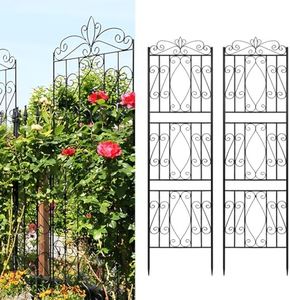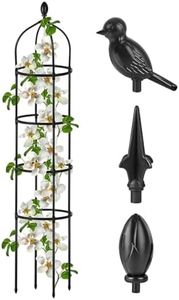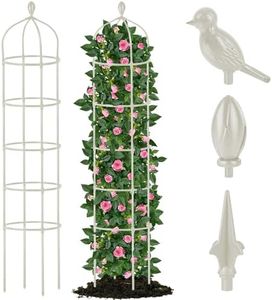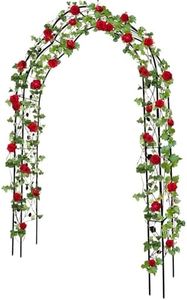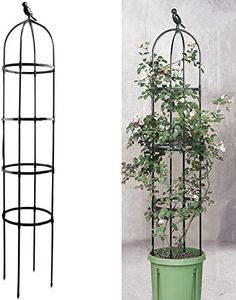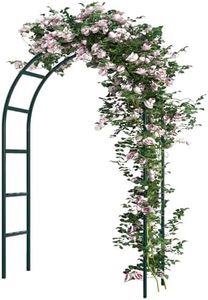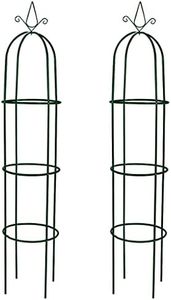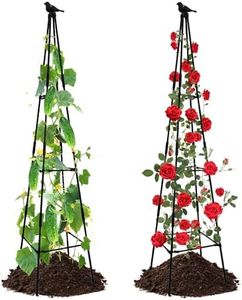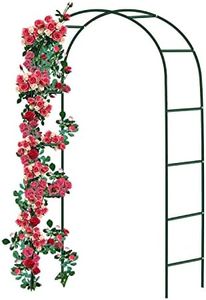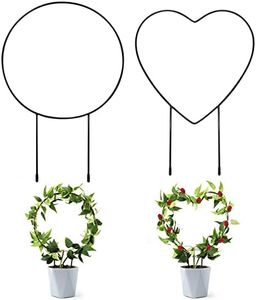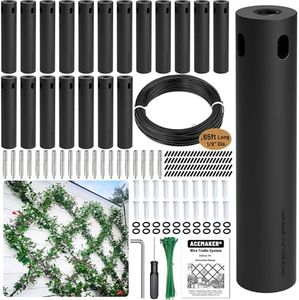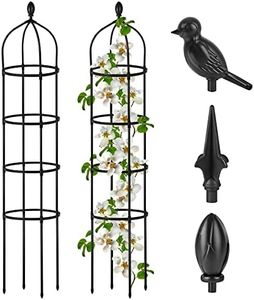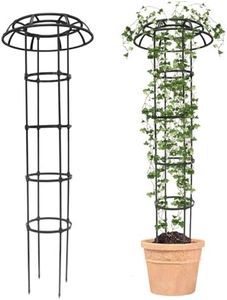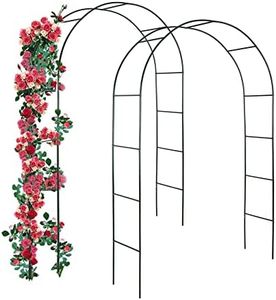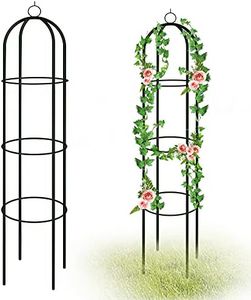We Use CookiesWe use cookies to enhance the security, performance,
functionality and for analytical and promotional activities. By continuing to browse this site you
are agreeing to our privacy policy
10 Best Climbing Roses
From leading brands and best sellers available on the web.Buying Guide for the Best Climbing Roses
Choosing the right climbing rose for your garden combines both practical and aesthetic considerations. Climbers can cover walls, fences, arches, and pergolas, adding stunning blooms and often delightful fragrance to your outdoor space. Before committing, think about how much space you have, the look you want, the support structure, local climate, and the amount of care you can provide. By understanding what characteristics matter, you’ll be able to select a rose that thrives where you plant it and gives you the beauty you’re seeking season after season.Growth HabitGrowth habit describes how the rose climbs and how much space it will cover. Some roses have long, flexible canes that can be trained horizontally or vertically, while others have stiffer, more upright growth. For large fences or walls, look for vigorous climbers with long canes, which can often reach over 10 feet. For smaller structures or confined spaces, choose a more compact or rambling type that doesn’t sprawl too much. Consider what structure you want to cover and make sure the growth habit matches your support setup and available space.
Blooming PatternThe blooming pattern tells you if the rose blooms all at once, just once per year, or repeats flowering. Some climbing roses bloom once a season in a big flush, while others are repeat bloomers that offer flowers throughout the growing season. If you want ongoing color, look for repeat or continuous bloomers. For a dramatic, once-a-year display, a single-flowering type might suit you. Think about whether you prefer long-term color or a spectacular but short-lived show.
Flower Type and SizeClimbing roses come with various types and sizes of blooms, from small clusters to large, solitary flowers. Petal count can range from simple single petals to densely petaled full flowers. Larger, fuller blooms often provide a classic, old-rose look, while smaller ones can make a more casual or wild impression. Consider the style you prefer and how visible you want the flowers to be from a distance—you may want large blooms for an eye-catching focal point or smaller ones for a softer, natural effect.
FragranceFragrance in climbing roses varies from subtle to strong, and is often an important factor for gardeners. A strongly scented rose can fill your garden or entryway with perfume, while less-scented types offer visual beauty without the aroma. Decide how important fragrance is in your situation—planting near windows, patios, or high-traffic areas might call for a fragrant variety, whereas a purely decorative planting might not require scent.
Disease ResistanceDisease resistance describes the plant’s ability to withstand common problems like black spot, mildew, or rust. Highly disease-resistant roses require less maintenance and look better without constant spraying or treatment. If you’re looking for an easy-care plant or gardening in a humid or rainy climate, prioritize disease resistance. If you enjoy detailed rose care and are ready to manage problems, this may be less critical.
Hardiness ZoneHardiness zone refers to the lowest temperatures a rose can handle. Not all climbing roses can survive in extremely cold or hot climates. Check your local USDA Hardiness Zone and be sure to select a rose that is recommended to thrive in your region. Choosing appropriately ensures your rose survives winter (or summer heat) without major issues.
Sun RequirementsClimbing roses generally prefer full sun, but some varieties tolerate partial shade. The amount of sunlight your chosen location receives each day will help determine the best variety for you. If planting in a sunny, south-facing spot, most climbers will do well. If your area gets less sunlight, pick a shade-tolerant rose for better performance.
